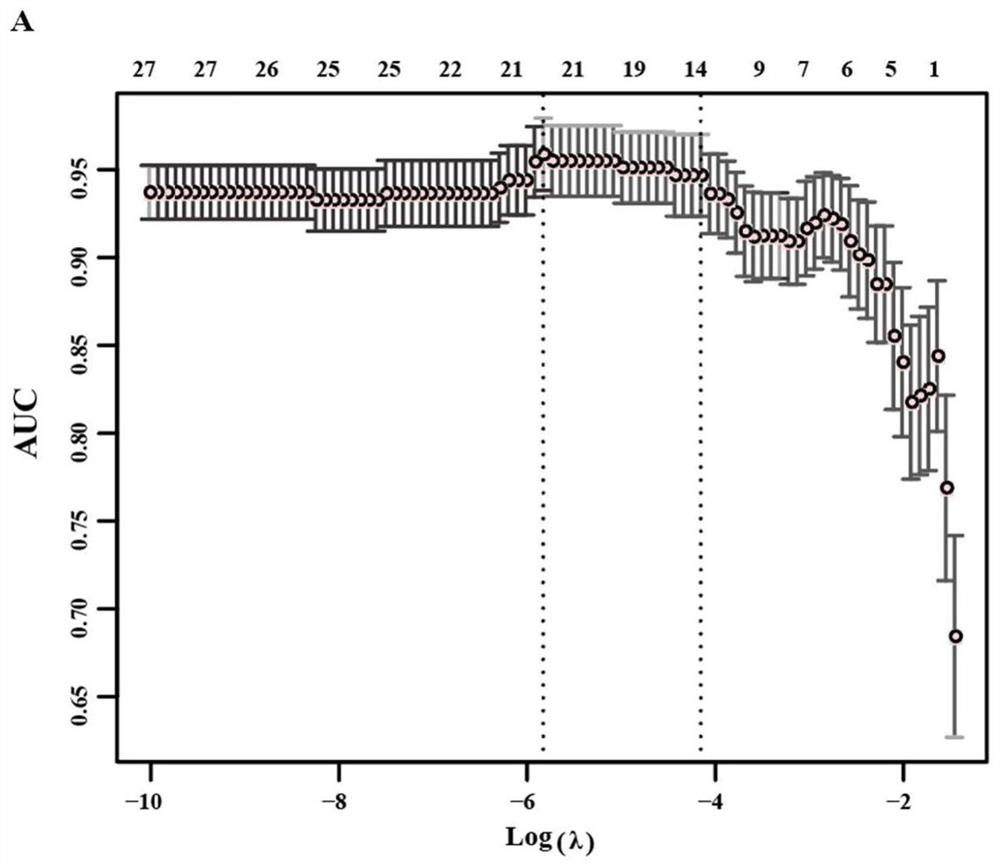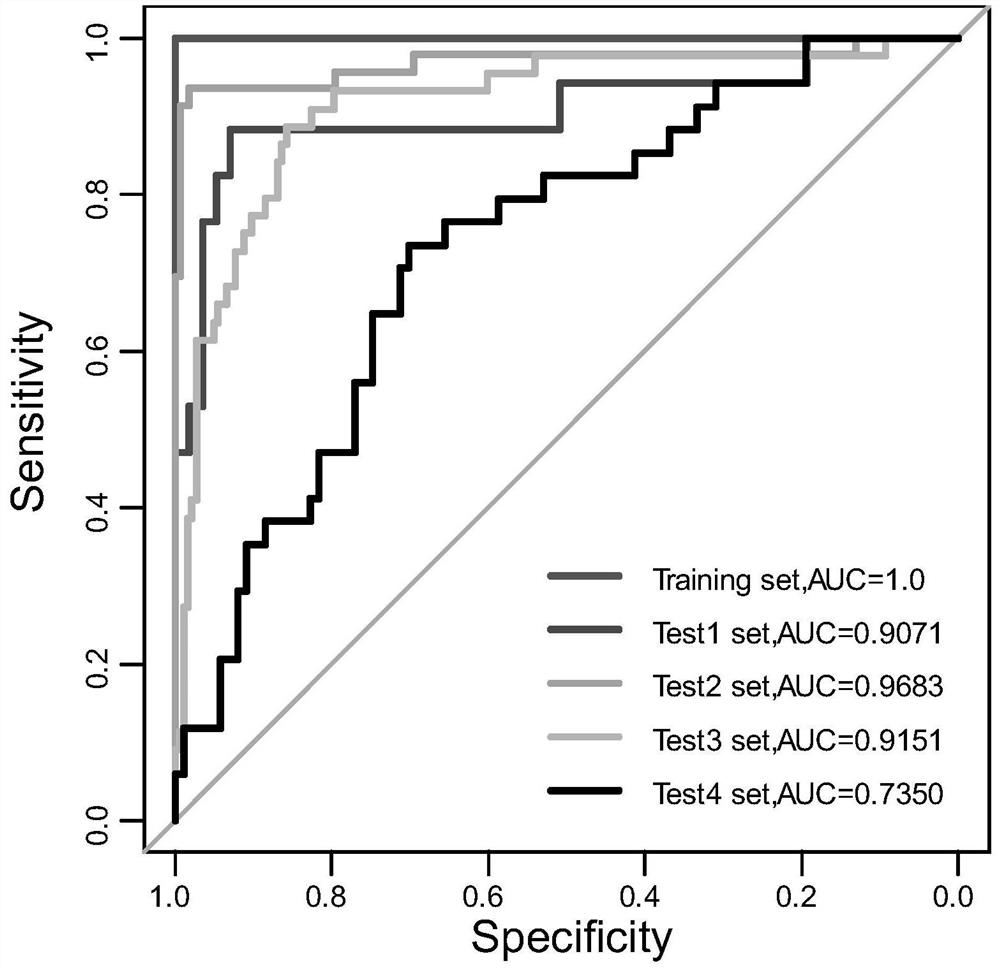Gene tag for predicting breast cancer neoadjuvant chemotherapy sensitivity and application thereof
A breast cancer, sensitivity technology, applied in the direction of genomics, proteomics, microbial measurement/testing, etc., can solve the problem that the effect of neoadjuvant chemotherapy for breast cancer has not been developed, so as to reduce medical costs, avoid overtreatment, The effect of precision therapy
- Summary
- Abstract
- Description
- Claims
- Application Information
AI Technical Summary
Problems solved by technology
Method used
Image
Examples
Embodiment 1
[0022] Example 1: Collection of case data sets and screening of differential genes
[0023] The inventor selected 744 samples of breast cancer patients undergoing neoadjuvant therapy. These patients were all treated with paclitaxel and fluorouracil-doxorubicin-cyclophosphamide (T / FAC) or paclitaxel and doxorubicin-cyclophosphamide (T / AC) neoadjuvant chemotherapy. Gene expression datasets GSE32646 (chip platform GPL570), GSE20271 (chip platform GPL96), GSE20194 (chip platform GPL570), GSE25055 (chip platform GPL96), GSE41998 (chip platform GPL571). Except for the GSE25055 dataset which only contains HER2-negative breast cancer, the other datasets contain all types of breast cancer.
[0024] Using adjusted P0.6 as the standard, the inventor screened 238 and 224 differential genes in the pCR group and RD group in the GSE32646 and GSE20271 data sets, respectively, and obtained 54 common differential genes by taking the intersection.
Embodiment 2
[0025] Example 2: Discovery of predictive markers for neoadjuvant chemotherapy sensitivity to paclitaxel and anthracycline in breast cancer
[0026] The LASSO method was used to select the best biomarkers for predicting pCR with neoadjuvant chemotherapy in T / FAC by the least standard partial likelihood deviation. The group classification is calculated by ten-fold cross-validation, and the AUC curve is obtained by binary logistic regression. Therefore, the LASSO method assigns a regression coefficient to each signature. On this basis, a scoring system is constructed using the regression coefficients to weight the values of the selected signatures. The inventor took 54 common differential genes of the GSE32646 data set as the training set (Training set), a total of 115 patients, after T / FAC neoadjuvant chemotherapy, 27 patients with pCR, accounting for 23.48%, 88 patients with RD, accounting for 76.52% %. Use the R language "glmnet" software package to perform LASSO regressi...
Embodiment 3
[0031] Example 3: Validation of the predictive model
[0032] The inventors used 4 data sets from different platforms to verify the prediction model constructed by this set of gene signatures containing 25 genes. That is, the prediction score of each sample is calculated by the expression of 25 genes, and the ability to distinguish pCR and RD samples is evaluated by the indicators of the receiver operating characteristic ROC curve. The verification results are as follows:
[0033] There were 74 patients in GSE20271 verification group 1 (Test1 set). After T / FAC neoadjuvant chemotherapy, there were 17 patients with pCR (22.97%), 57 patients with RD (77.03%), and 14 patients with pCR (18.92%) predicted according to the model score. %), 60 cases of RD patients (81.08%), the model evaluation index AUC is 0.9071, AC is 0.9054, SE is 0.7059, SP is 0.9649, PPV is 0.8571, NPV is 0.9167, the accuracy is good.
[0034]Among the 207 patients in GSE20194 verification group 2 (Test2 set),...
PUM
 Login to View More
Login to View More Abstract
Description
Claims
Application Information
 Login to View More
Login to View More - R&D
- Intellectual Property
- Life Sciences
- Materials
- Tech Scout
- Unparalleled Data Quality
- Higher Quality Content
- 60% Fewer Hallucinations
Browse by: Latest US Patents, China's latest patents, Technical Efficacy Thesaurus, Application Domain, Technology Topic, Popular Technical Reports.
© 2025 PatSnap. All rights reserved.Legal|Privacy policy|Modern Slavery Act Transparency Statement|Sitemap|About US| Contact US: help@patsnap.com



